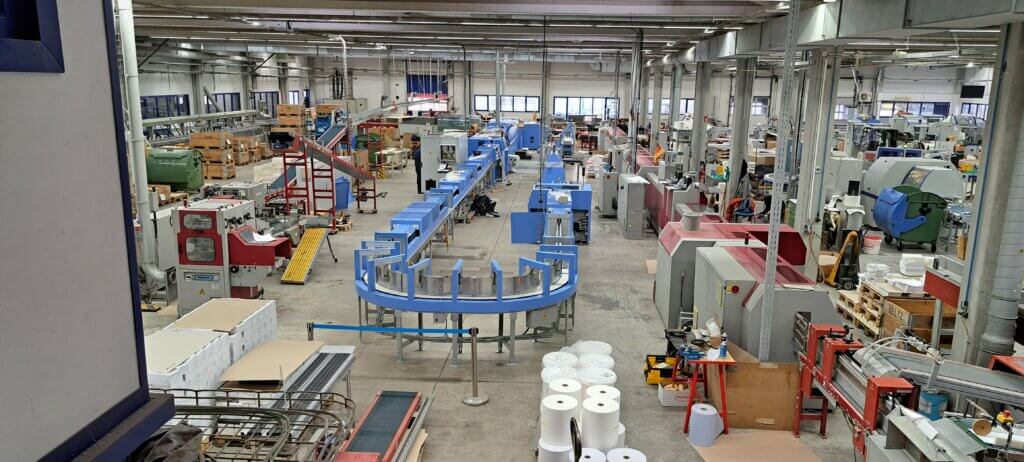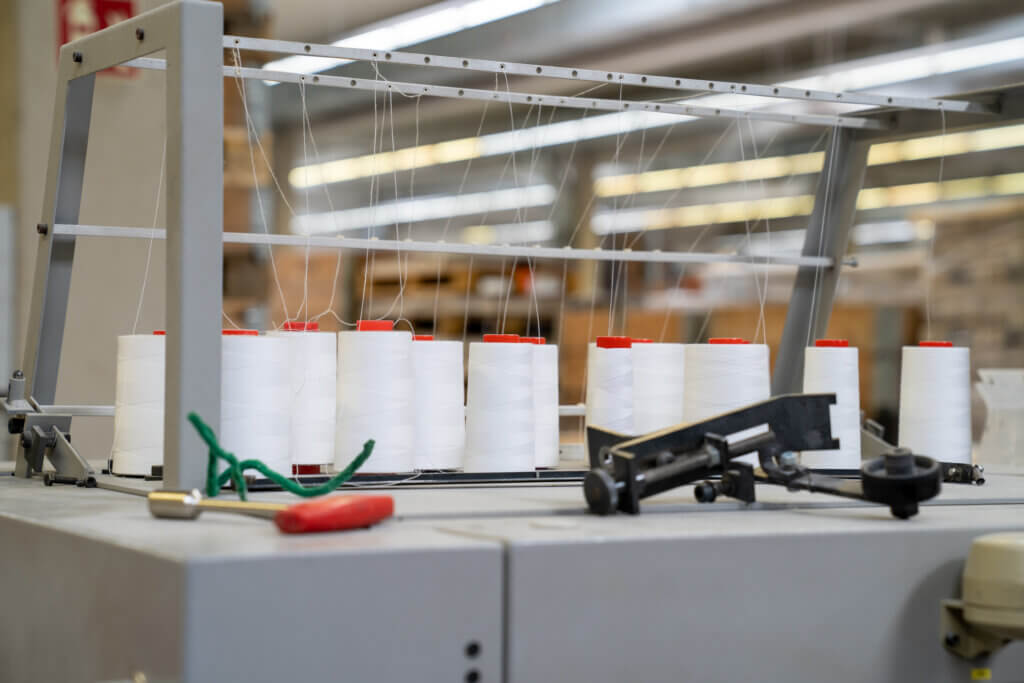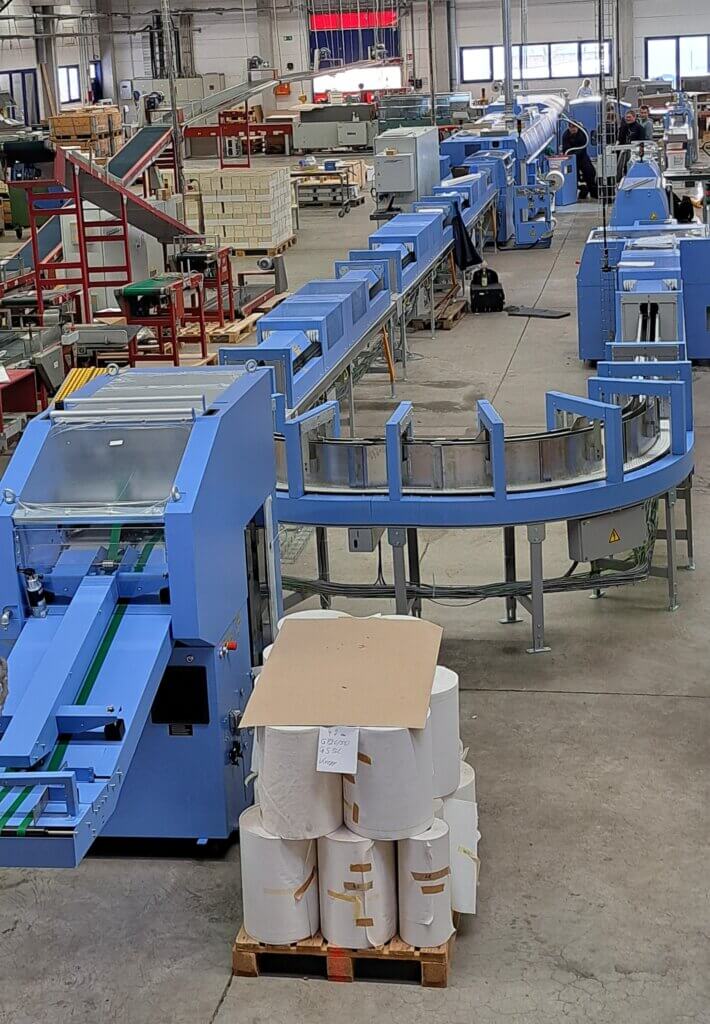Choosing the right binding is an important step in the production of high-quality print products. Whether for books, brochures or catalogs – the binding not only influences the durability, but also the feel and overall impression of the finished product. Print shops and customers are often faced with the decision between two popular binding techniques: thread sewing and perfect binding.
Thread sewing is considered to be particularly stable and durable and is often used for books that will be used for years to come. In contrast, perfect binding is
In this article, you will learn about the differences between thread sewing and perfect binding and the advantages and disadvantages of both methods. We offer you a clear decision-making aid so that you can choose the optimal binding technique for your next print project. Whether it’s a long-lasting book project or a quickly produced brochure –
What is thread sewing?
Thread sewing: stability and quality in one
Thread sewing is one of the most durable and high-quality binding techniques in book printing. With this method, folded sheets of paper are not only glued together, but also sewn with a robust thread. This creates a sturdy book block that is particularly resistant. Books with thread sewing can easily be opened flat without the spine breaking – a clear advantage if pages are to be used or written on frequently, as is the case with notebooks or workbooks.
Thread sewing is often used for hardcover books or high-quality magazines in particular. It not only ensures a long shelf life, but also gives the end product a classy and professional appearance thanks to the visible finish. Since the beginning of the year, we have had a new machine for our thread-sewn hardcover production, the
👉🏻 Read all the background information on the new book production possibilities in our company in our blog article: Upgrading our book production with the RF700: new exciting possibilities in our thread-sewn hardcover production

Advantages and disadvantages of thread sewing
Thread sewing scores points above all for its stability and resilience. It can withstand heavy use, as is the case with diaries or cookbooks, for example. At the same time, the precise workmanship enhances the appearance of the book and makes it a long-lasting companion.
The disadvantage of this technique is the higher cost. Processing requires more time and materials than other binding techniques, which increases the production costs. Thread sewing is therefore particularly suitable for books that have a long lifespan or have a high emotional or practical value for the user.
To summarize: If you value quality, durability and an attractive appearance, thread sewing is the best choice.
What is perfect binding?
Perfect binding: Between efficiency and versatility
Perfect binding is the most widely used method of bookbinding and is valued above all for its speed and cost efficiency. With this technique, loose pages are bonded directly to the spine using an adhesive, creating a stable book block. This method does not require any additional thread or complex processing and is therefore ideal for large-format productions such as brochures, catalogs or softcover books.
Perfect binding is considered to be particularly versatile. It can be used with a wide variety of paper types and formats and enables printed products to be produced quickly and in large quantities. This technique is often used for magazines or advertising brochures in particular, as it offers a quick and cost-effective solution.
Advantages and disadvantages of perfect binding
Perfect binding offers a number of advantages, first and foremost its efficiency and low price. The production time is significantly shorter compared to thread sewing, and the lower material costs make it the ideal choice for projects with a small budget or tight deadlines. In addition, modern gluing technologies such as PUR binding (polyurethane) can achieve good durability that can withstand even heavier papers.
However, perfect binding also has its weaknesses. Particularly with cheaper variants such as hotmelt binding, heat or the weight of the paper itself can cause the binding to loosen. Books that are frequently opened and closed lose their stability more quickly. Adhesive binding is therefore less suitable for printed products that are used over the long term or are subject to heavy use.
Conclusion: Perfect binding is an economical solution for projects where speed and low costs are paramount. However, for long-lasting and heavily used books, a more robust alternative such as thread sewing is recommended.
When is which binding suitable?
The decision between thread sewing and perfect binding depends heavily on the requirements of the printed product. Both techniques have specific advantages that make them suitable for different purposes. Here is an overview of the most important areas of application:
Thread stitching – Ideal for:
- High-quality books: Hardcover books, illustrated books or collector’s editions, which should impress with their quality and longevity.
- Notebooks and diaries: Products that are used regularly and are subject to heavy use. The sturdy binding prevents the pages from tearing out prematurely.
- Cookbooks and workbooks: Books that need to be opened frequently and are particularly practical because they lie flat.
- Premium magazines: High-quality publications designed to impress with a sophisticated look.

Perfect binding – Perfect for:
- Brochures and magazines: Regular publications that are produced in large quantities.
- Advertising materials: catalogs or brochures where low production costs and short production times are crucial.
- Softcover books: novels, non-fiction or print products that should remain affordable for a broad target group.
- Short-term projects: Anything that needs to be produced quickly and efficiently, such as event materials.
💡 O ur tip: Think about how long your printed product will be used and what impression you want it to make. Thread sewing is ideal if durability and value are paramount. Perfect binding is the better choice for low-cost projects that can be implemented quickly.
From the idea to implementation: we guide you to the right binding technique
The right binding can make all the difference when it comes to creating a print product that is both functional and visually appealing. Whether durable thread sewing or cost-efficient perfect binding – both techniques have their place in the world of printing and offer their own advantages depending on the area of application.
At Beltz Grafische Betriebe, you have the choice: we offer both high-quality thread sewing and versatile perfect binding. Our experienced experts will be happy to advise you on which binding technique is best suited to your project and ensure that you get the optimum result.
👉🏻 Read details about our binding types and other printing services on our services page.
If you are already planning a specific project or are still unsure which binding is right for you, simply contact us. Use our


